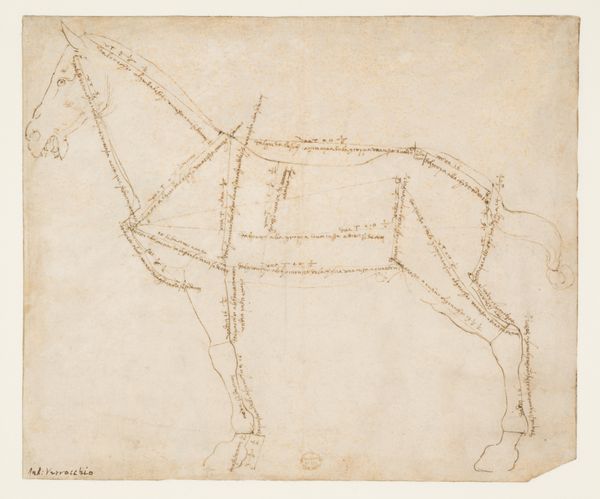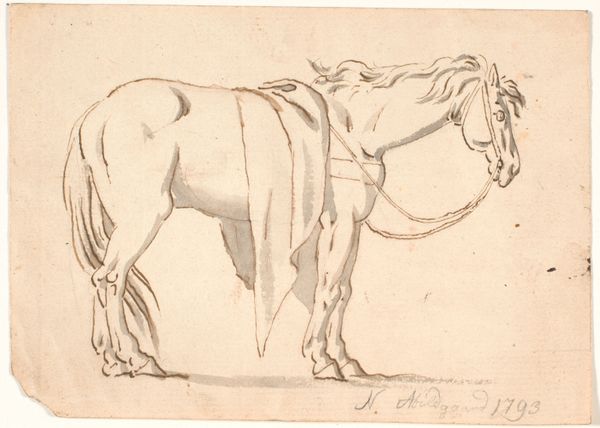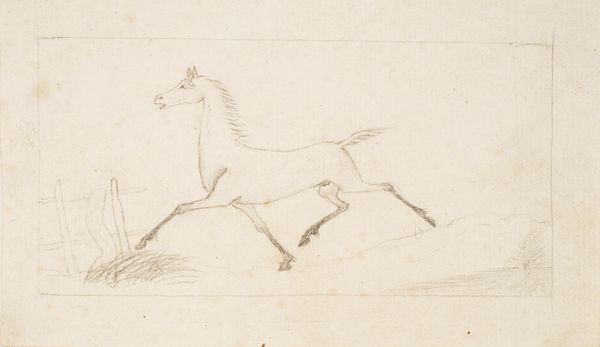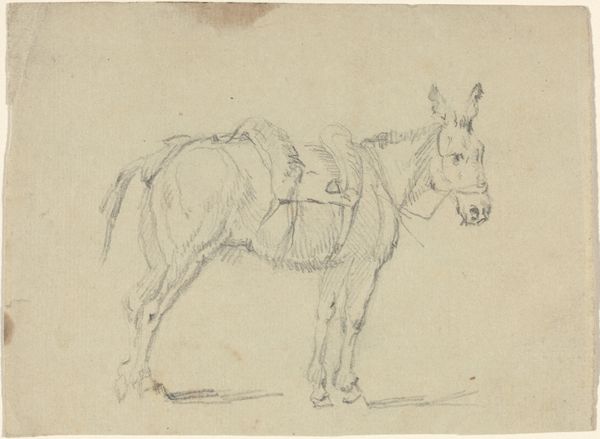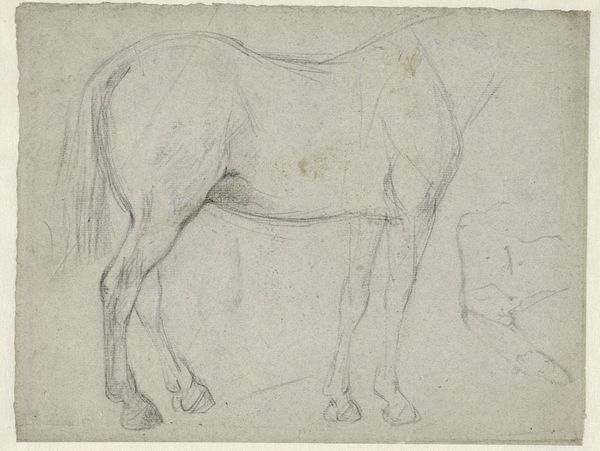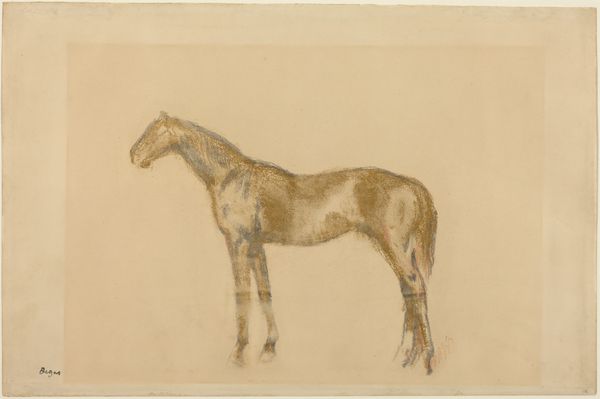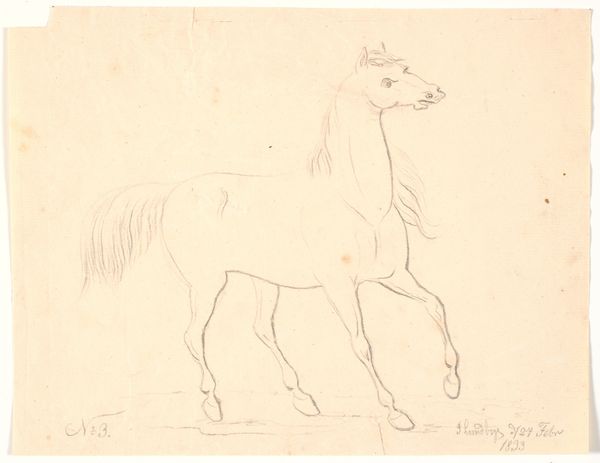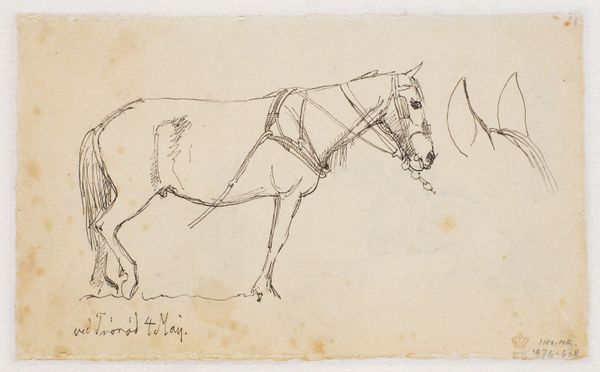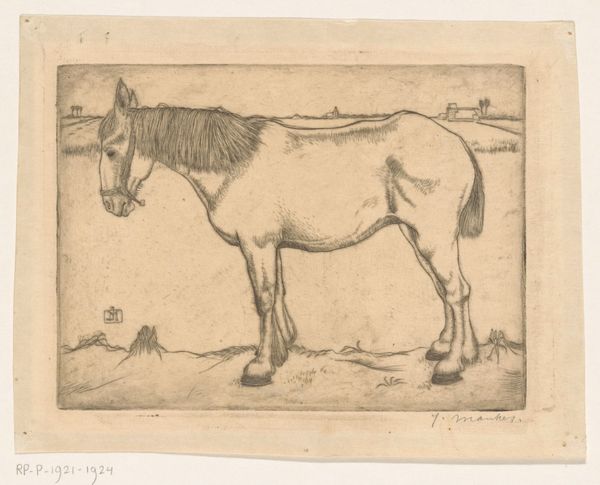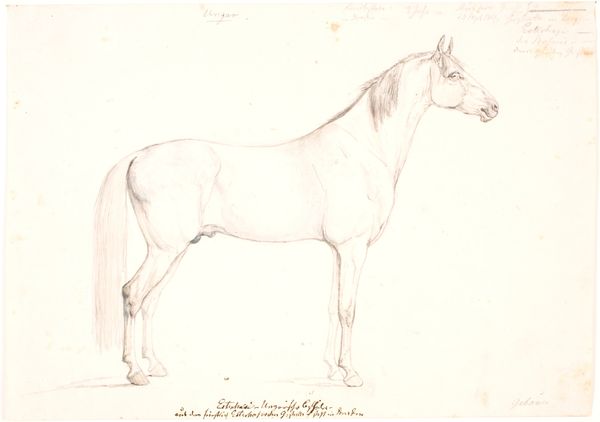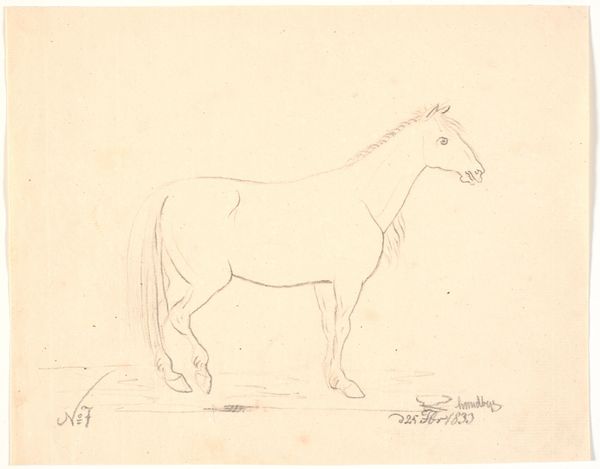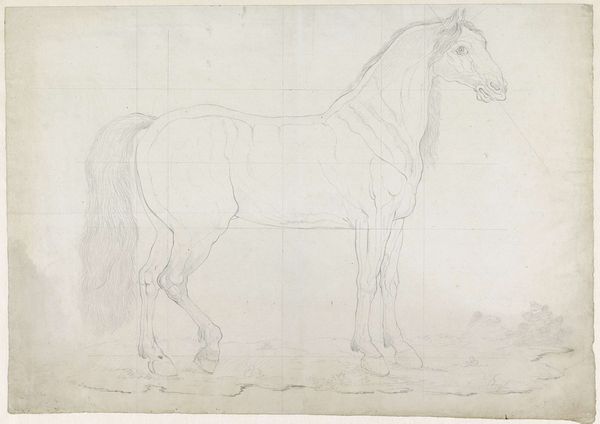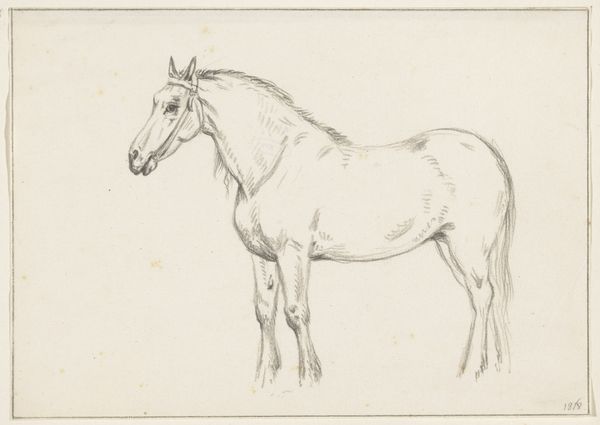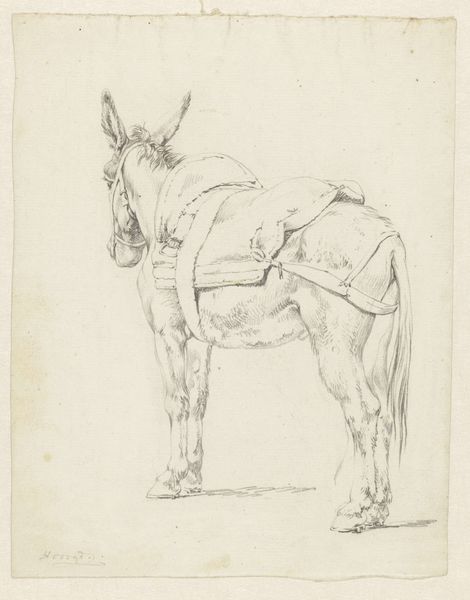
drawing, pencil
#
portrait
#
drawing
#
landscape
#
etching
#
figuration
#
pencil
#
line
#
academic-art
#
realism
Dimensions: 223 mm (height) x 322 mm (width) (bladmaal)
Curator: Before us is "Anatomisk og proportionsstudie. En hest" or "Anatomical and proportional study. A horse," a drawing crafted between 1628 and 1630 by Willem Panneels. What is your immediate take? Editor: It has a kind of raw beauty, doesn’t it? The horse seems trapped within geometric constraints, giving off a mood of controlled potential. Curator: That is an interesting way to approach it. Panneels, a Flemish artist working within the Baroque tradition, seems focused on rendering something of academic pursuit here rather than artistic freedom. The linear construction is all about the scientific measurement of proportions. He probably conceived the subject matter in connection with the history of academic art during the baroque era, situated between social structures of knowledge and production in arts. Editor: Indeed, and if we peel back a layer, the horse is a potent symbol across cultures – strength, freedom, virility. Restraining the raw energy of the horse by imposing geometrical precision might say something about taming the inherent wildness and free spirit in human life itself? Is that going to far? Curator: Not at all. Consider also the socio-political context. The 17th century saw increasing social stratification and the rise of academic institutions keen to classify, codify, and control the flow of knowledge and ideas. I am very glad you said it about virility because, the horse and equestrian culture were largely associated with royalty, power, and nobility in the European art history. Editor: Thinking symbolically, the thin, dark lines remind me of astrological charts, the unseen forces we ascribe meaning to. Does the image reveal how we humans attempt to contain both the beauty and ferocity of nature, trying to plot a rational map onto something inherently instinctual? Curator: Intriguing. To contextualize, Panneels's artistic lineage stems from Peter Paul Rubens's studio, with this work residing at the SMK, the National Gallery of Denmark. He appears driven here to capture both external structure, muscles, and sinews, and deeper truths around social constructs as the symbol of the animal. Editor: Well, I am now appreciating the artistic ability to convey something that still provokes and creates conversation centuries later. Curator: Absolutely. We might then agree the intersections here can serve as an intriguing lens for re-assessing and contemplating our own perspectives.
Comments
No comments
Be the first to comment and join the conversation on the ultimate creative platform.
